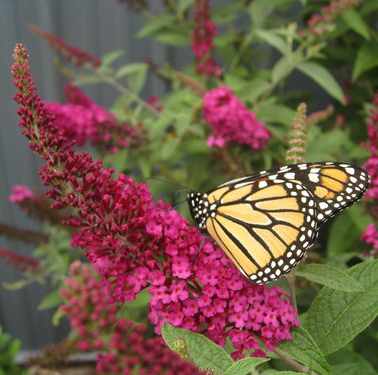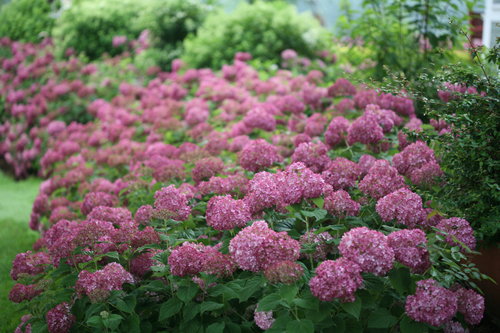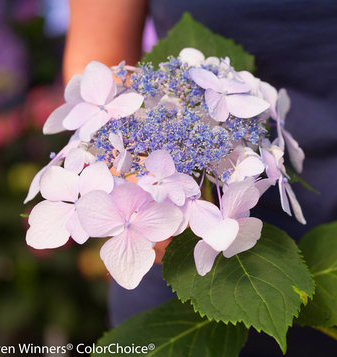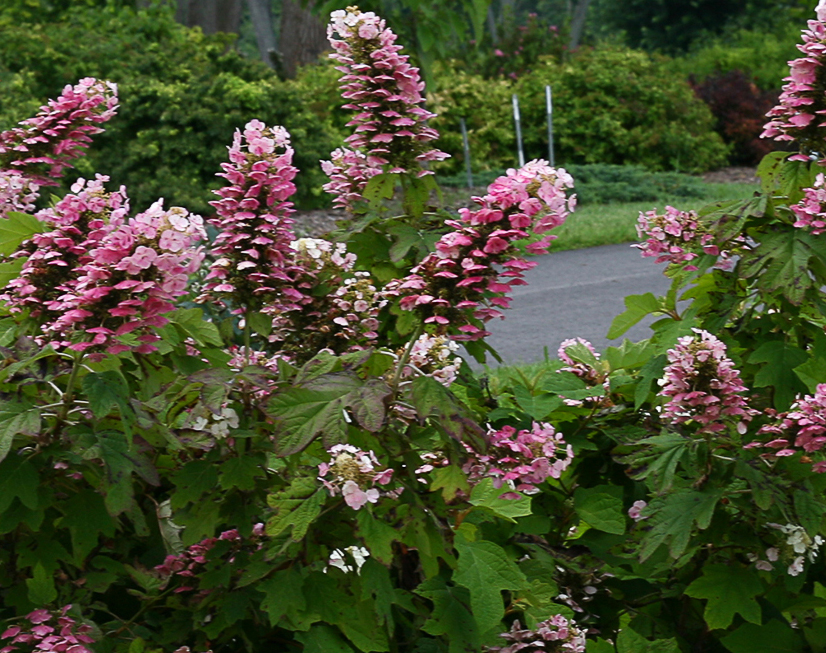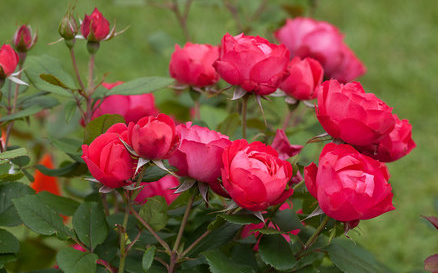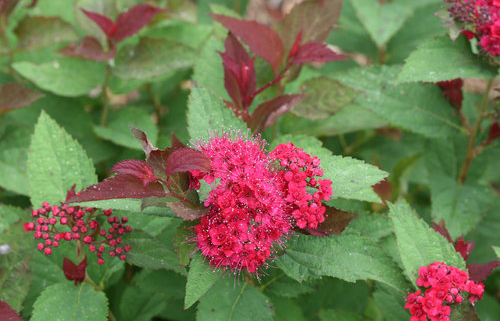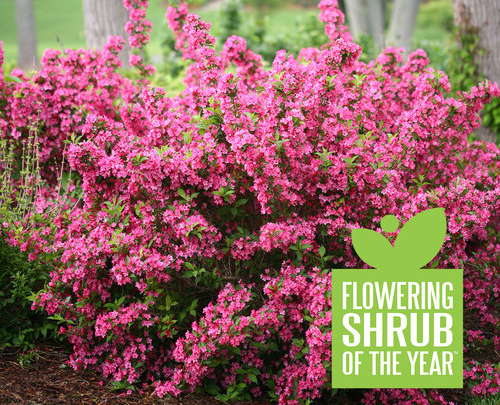10 Radiant Reblooming Shrubs
Putting the flowers in flowering shrubs has always been our mission – and these plants epitomize that. They rebloom, which is to say that instead of just blooming once, along with conventional varieties, they go on to bloom again, or to keep blooming, through the season. If you are looking to add flowers, and plenty of them, to your landscape, take your pick of these ten favorites. All have been trialed and proven to be outstanding in the field, and in your garden.
Butterfly Bush Butterfly bush have one of the longest bloom times of all garden plants: they seem to never be without flowers from early summer through autumn. This makes them perhaps better called “continuous bloomers” over rebloomers, since they don’t really take a break like other plants on this list do. Whatever you call them, though, you can count on our three award winning butterfly bush series to bring the blooms all summer long without you lifting a finger. They don’t need deadheading – simply plant them in a sunny spot and enjoy the show! Achieve success with butterfly bush in our Ultimate Guide to Butterfly Bush.
Incrediball® Blush hydrangea Award-winning Incrediball Blush hydrangea is a pink version of our best-selling Incrediball hydrangea. Its flowers aren’t just any hum-drum pink: they have this amazing silvery hue that’s unlike any other flower. Incrediball Blush is the perfect way for those who live in really cold climates (USDA zones 3 and 4) to finally be able to grow a pink hydrangea! It shares the same strong stems, huge flowers, and rock-solid reliability as Incrediball, but differs in color and the fact that new flowers will continue to develop all the way through autumn. If you love to cut hydrangeas for arrangements, it’s the perfect choice: the more flowers you cut, the more new ones you’ll get! Invincibelle® series hydrangeas Dr. Tom Ranney spent well over a decade developing the Invincibelle series of smooth hydrangeas. With that kind of dedication you know they’re good. Indeed, they are some of his finest work: neat, compact habits, strong stems that don’t flop, an amazing array of colors (take your pick of five!), and the ability to rebloom without deadheading or any special care. These are truly hydrangeas that even those in the coldest areas can grow and simply enjoy, without stress or worry, for years to come. Let’s Dance® series hydrangea Reblooming bigleaf hydrangeas aren’t a new concept, but reblooming hydrangeas that actually keep their promise are! We developed the Let’s Dance series at our facilities in West Michigan with an eye specifically toward improving performance in cold climates. This series of six lushly colorful, easy-to-grow hydrangeas bloom on old wood, like conventional types, and go on to create more flowers on the new wood later in summer. Older types needed a long time of favorable growing conditions in order to grow enough for new wood blooms to form; we worked to shorten that period so that even in areas with cooler, shorter summers, you’ll get even more of what makes the ultimate summer flowering shrub so appealing.
Most people don’t think of oakleaf hydrangeas as reblooming, and they can’t be blamed – most aren’t. Gatsby Pink oakleaf hydrangea, however, is an exception. Its football-sized blooms start in early summer and quickly turn a glorious pink, which sticks around til frost. Soon after, crops of fresh white lacecap blooms appear on the plant. They’re a bit smaller than the first round of blooms, but the effect is stunning. Add in the outstanding fall foliage of this durable native shrub and you’ve got a landscape classic. |
Tuff Stuff hydrangeas really are in a class by themselves. Known as mountain hydrangeas, they are closely related to the perennially popular bigleaf types, but are native to the chilly mountaintops of Japan as opposed to the mild seaside where their bigleaf cousins grow. As a result, they’ve naturally developed excellent resistance to cold. If you have given up on bigleaf hydrangeas, let Tuff Stuff redeem hydrangeas for you! We selected these four fantastic plants for absolutely beautiful lacecap blooms, handsome deep green foliage, very tidy compact habit, and reblooming ability. They truly are a cut above the rest! Oso Easy roses are another flowering shrub that’s probably better described as continuous blooming over reblooming. All thirteen varieties in this award-winning series (which includes prestigious recognition from the American Rose Society) start to bloom in early summer and keep up the show through frost. If it gets extremely hot, they may have to take a little break to recover, but once cool conditions return, they’re back at it and better than before. Each was selected for outstanding color, versatile size and shape, disease resistance, and the fact that you’ll never need to deadhead a single bloom to keep the flowers coming. That’s what makes them oh so easy! Innovative is a word that gets thrown around a lot with gadgets but rarely with plants. That’s a shame, because they can be truly innovative, like Double Play Doozie spirea. It’s the first-ever reblooming Japanese spirea! It does not set seed, so it directs all that energy into creating more bright red-pink flowers. And more flowers. And more flowers, all the way through frost. It’s a bit more upright than your typical mounded Japanese spirea, so it makes an amazing choice for an easy care, colorful, non-stop blooming hedge, or mix it with your favorite annuals and perennials for a floriferous display.
Bloomerang Purple lilac, the original reblooming lilac, is still a classic – and the series has grown to include four fragrant, reblooming, disease resistant selections. Whichever one you choose, you can expect Bloomerang lilac to bloom in mid-late spring along with other lilacs (sometimes a bit later, depending on conditions), then take a rest through about late July before it starts to push out clusters of fragrant new blooms through frost. You do not need to trim or deadhead Bloomerang lilac after it blooms in order to get a rebloom, but trimming does result in more flowers, since it encourages more new growth. The more new growth Bloomerang lilac puts on after its first bloom, the better the rebloom will be, so it’s more important to keep it happy and growing vigorously in this period: don’t let it dry out, don’t let it get too soggy (lilacs are extremely sensitive to wet conditions), and consider giving it a little dose of rose fertilizer as the first bloom is winding down to boost new growth production.
Think of the Sonic Bloom series as a modern take on an old-fashioned favorite: all the charm of your grandmother’s weigela, but with high-powered rebloom that will have your family making all new memories! Take your pick of five fabulous colors, and enjoy its bloom alongside other weigela. Then, after a little rest, watch those trumpet-shaped blooms come blaring back summer through fall. If you’re a weigela lover, you probably already know that they attract hummingbirds, which gives Sonic Bloom yet another advantage over other types: they provide food over a much longer period, including that crucial autumn migration when hummers really need to fuel up. Watch our reblooming shrubs in action in our Top Ten Reblooming Shrubs video! |




